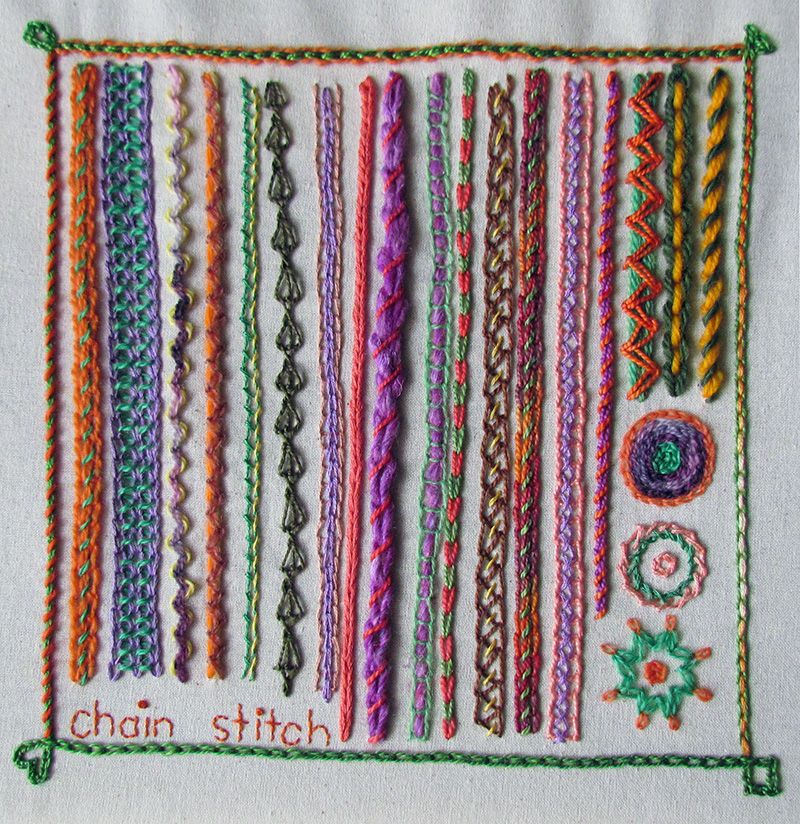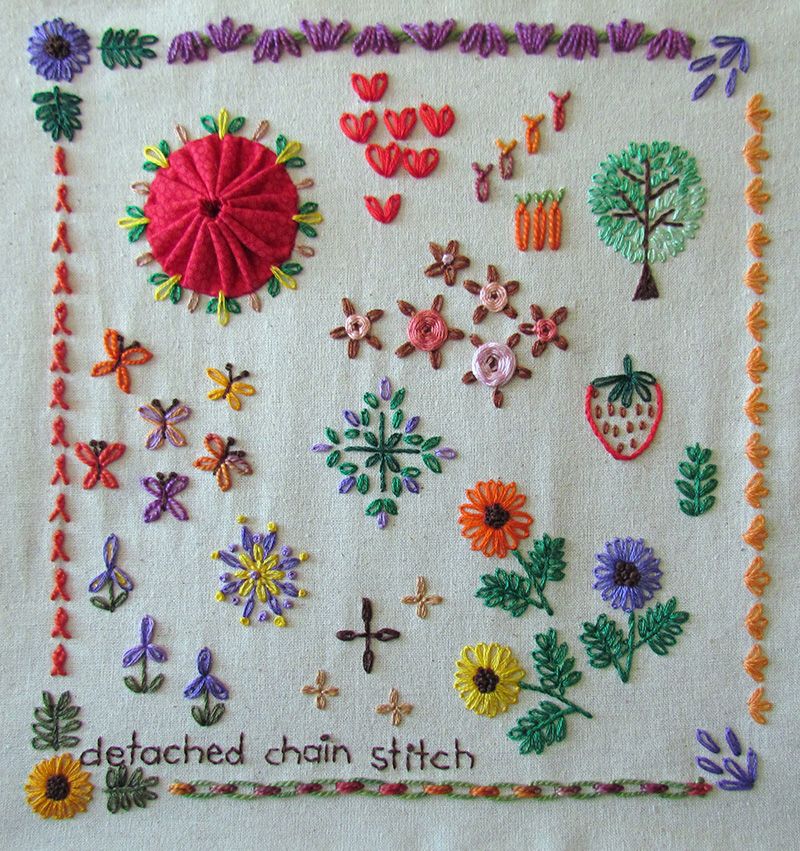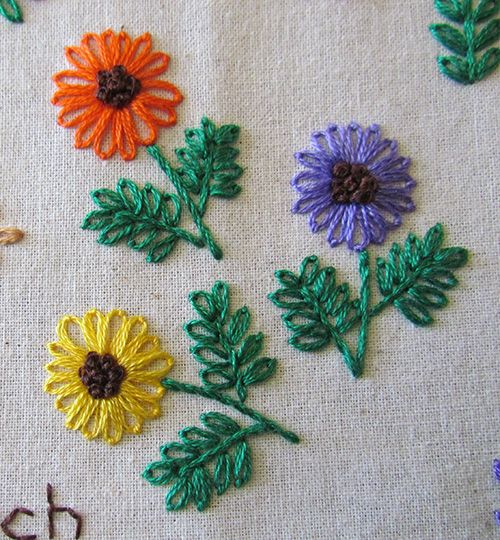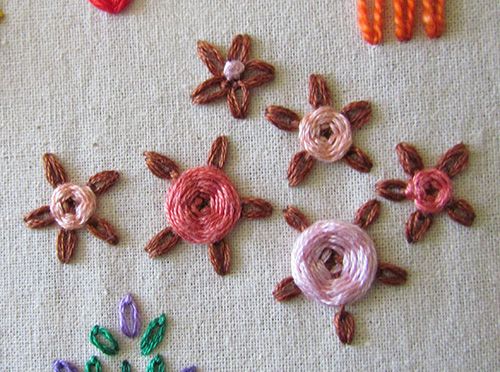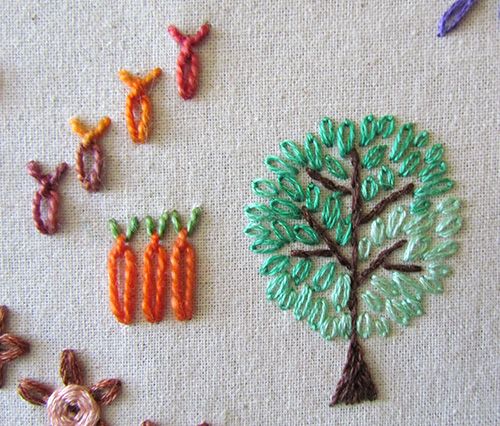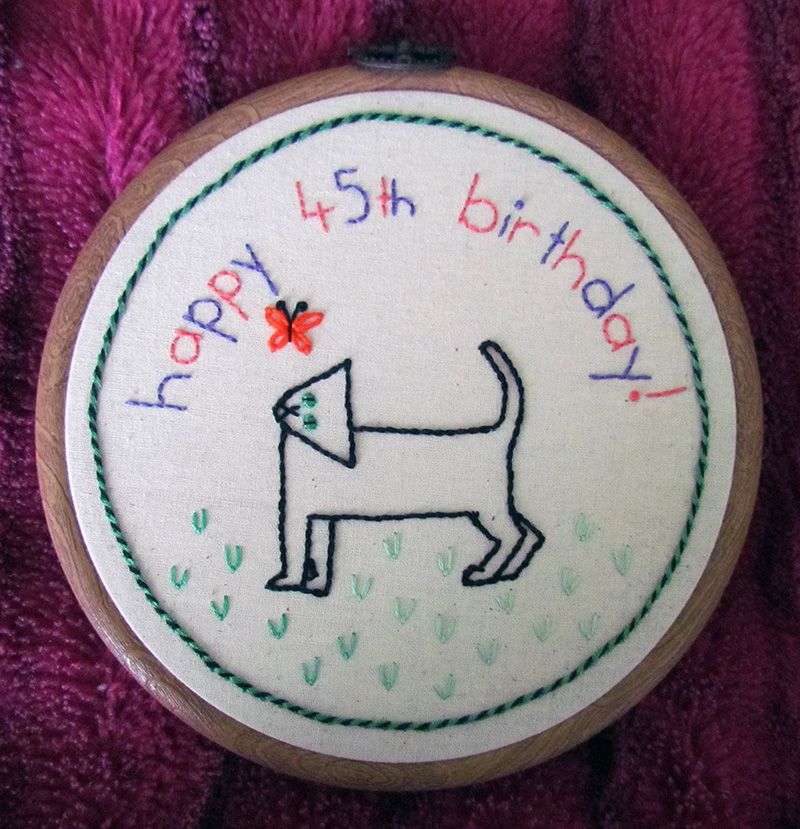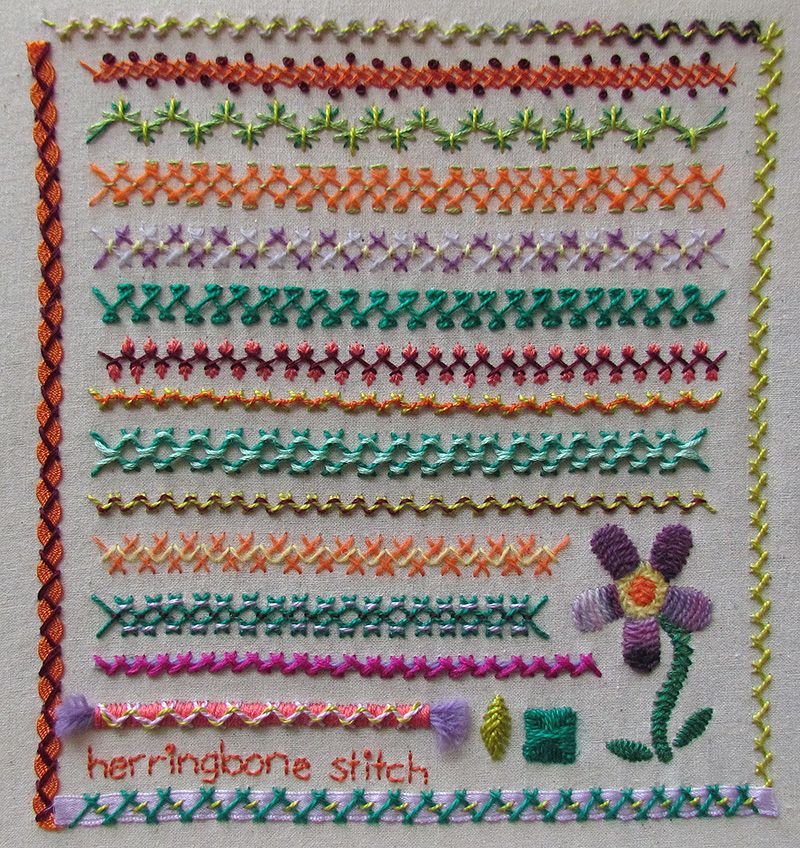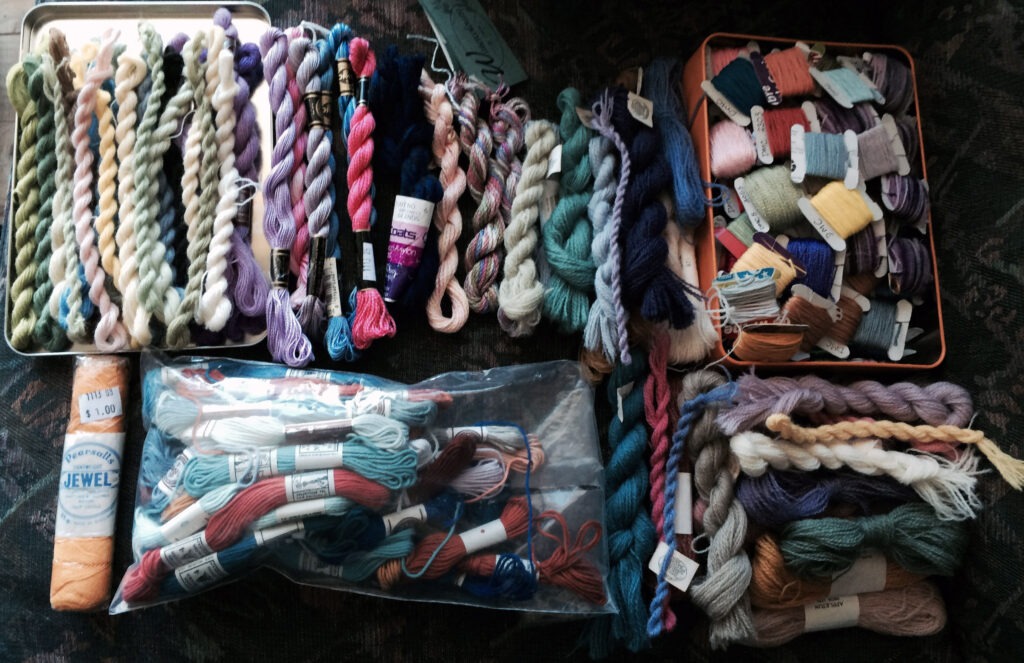I didn’t think chevron stitch could be used for much other than straight lines and a stacked filling. Boy, was I wrong.
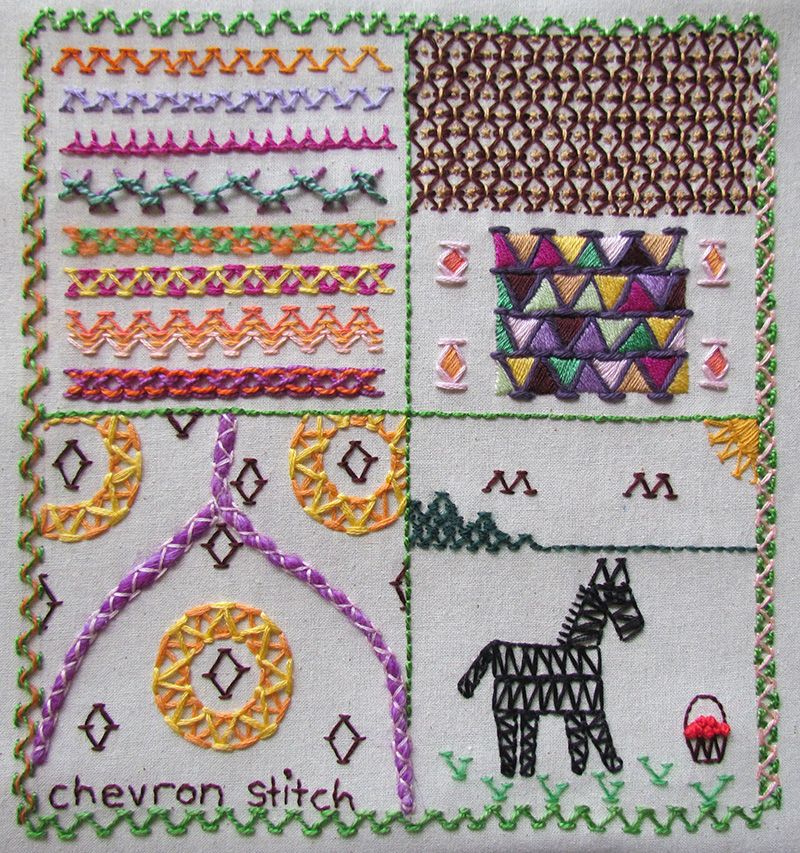
The Batsford Encyclopaedia of Embroidery stitches only had four variations of chevron stitch so I had to research a lot online to find inspiration. I’ll add links to the inspiration source or tutorial wherever possible.

On the left of the photo above: Threaded chevron stitch. The lacing is worked the same way as threaded herringbone stitch.
Top: Chevron stitch with the cross bars tacked down with a tiny straight stitch
Rows 1 – 4 from the Batsford Encyclopaedia: Chevron stitch, pagoda stitch, half chevron, raised or whipped chevron.
Row 5: Double chevron stitch
Row 6 : Double chevron stitch with the second layer sitting completely on top
Row 7: Shaded chevron stitch stacked closely together
Row 8: Threaded double chevron stitch. Double chevron stitch threaded in the same way as threaded chevron stitch (one layer at a time).
I also tried beaded chevron stitch but my fabric was a bit flimsy and I couldn’t get the beads to sit nicely.
Then I was inspired by some fillings.
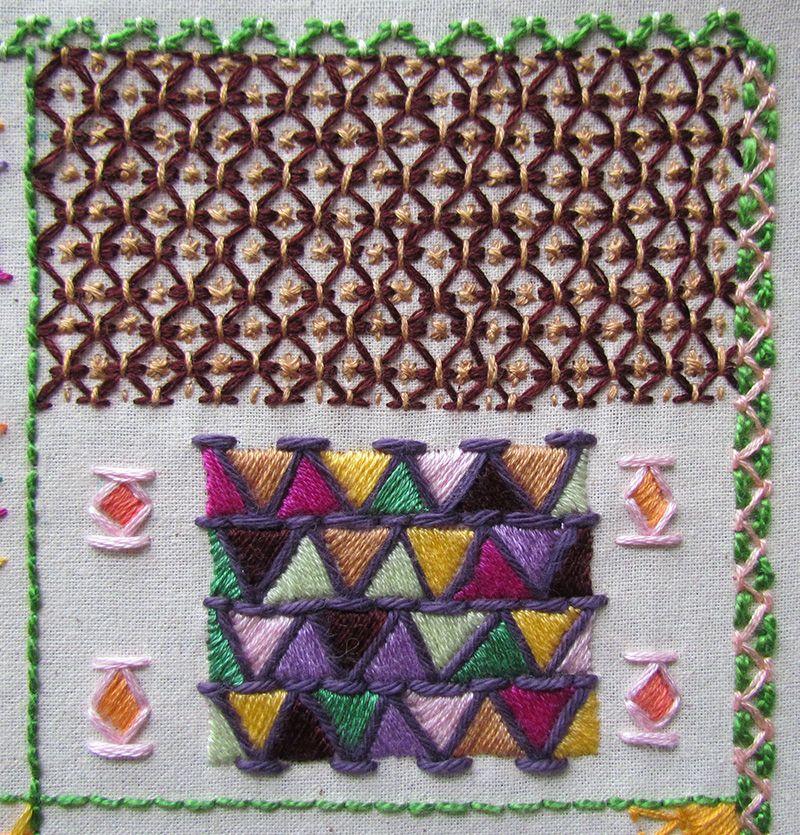
For the top half I worked the filling Sharon Boggon shows on the TAST stitch page. It looks quite different worked on calico than it does on even weave. I like both.
The bottom half was inspired by Alison M. Dearborn’s chevron stitch sampler on the Take a Stitch on Tuesday facebook group. I worked the chevron stitch in tapestry cotton and the satin stitch filling in 3 strands of embroidery floss. I think this is my favourite part of the sampler. It reminds me of 1970’s Japanese embroidery pattern books.
In square number 3 I worked a few things I wanted to remember. First I worked the double chevron stitch circles. Despite my original thoughts on chevron stitch, I found that it works beautifully on simple curves. Spirals are another matter. I couldn’t get those to work so they were unpicked.
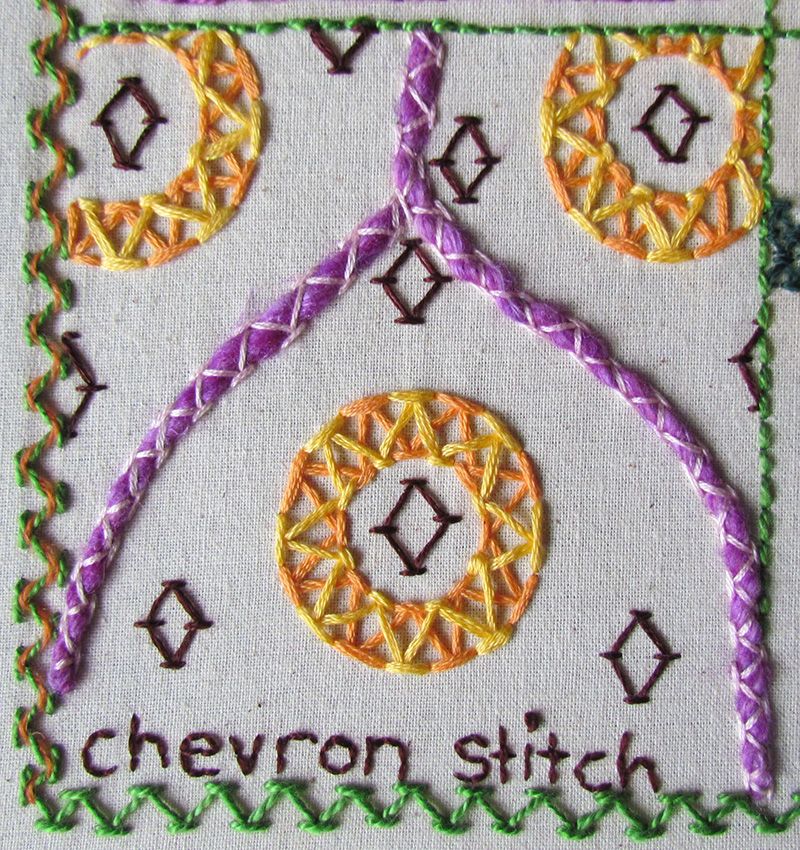
Next I worked the couched thread (Noro Taiyo knitting yarn), inspired by Majo van der Woude in the facebook group.
And finally a little picture.
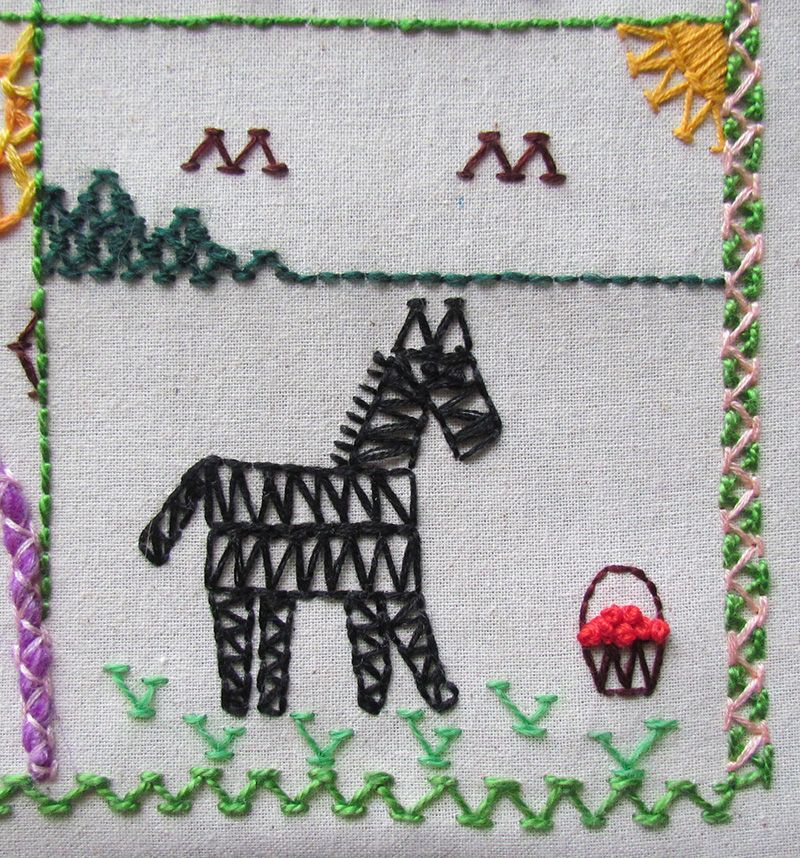
A little chevron stitch zebra eating apples from a basket under a chevron stitch sun with little “M” birds waiting to peck at the apple cores. In the background is a stacked chevron stitch mountain range and the zebra has chevron grass underfoot.
Some useful links:
TAST on Facebook
Sharron’s TAST FAQ on her website, Pintangle.
Free vintage stitch book downloads.

